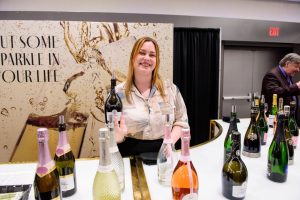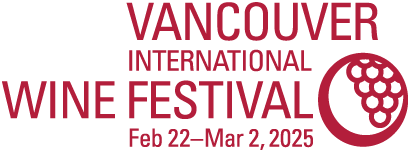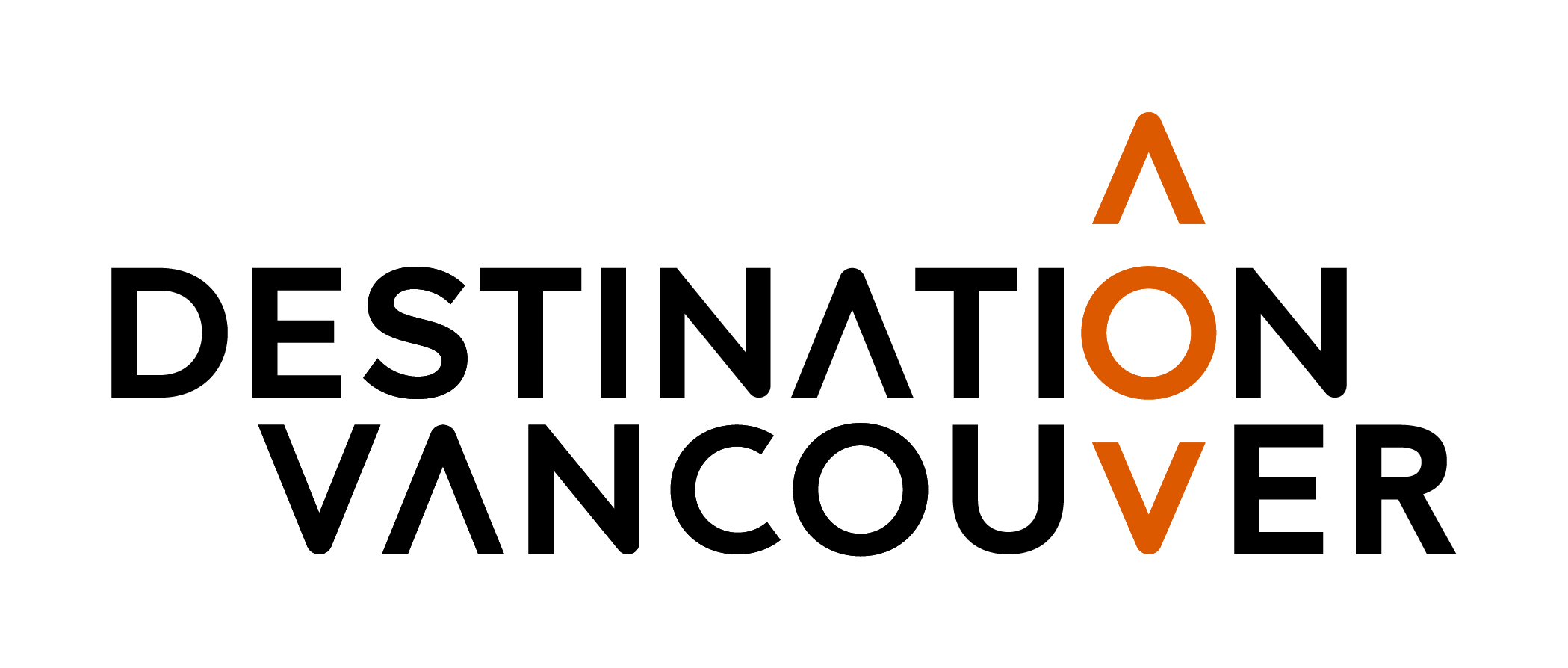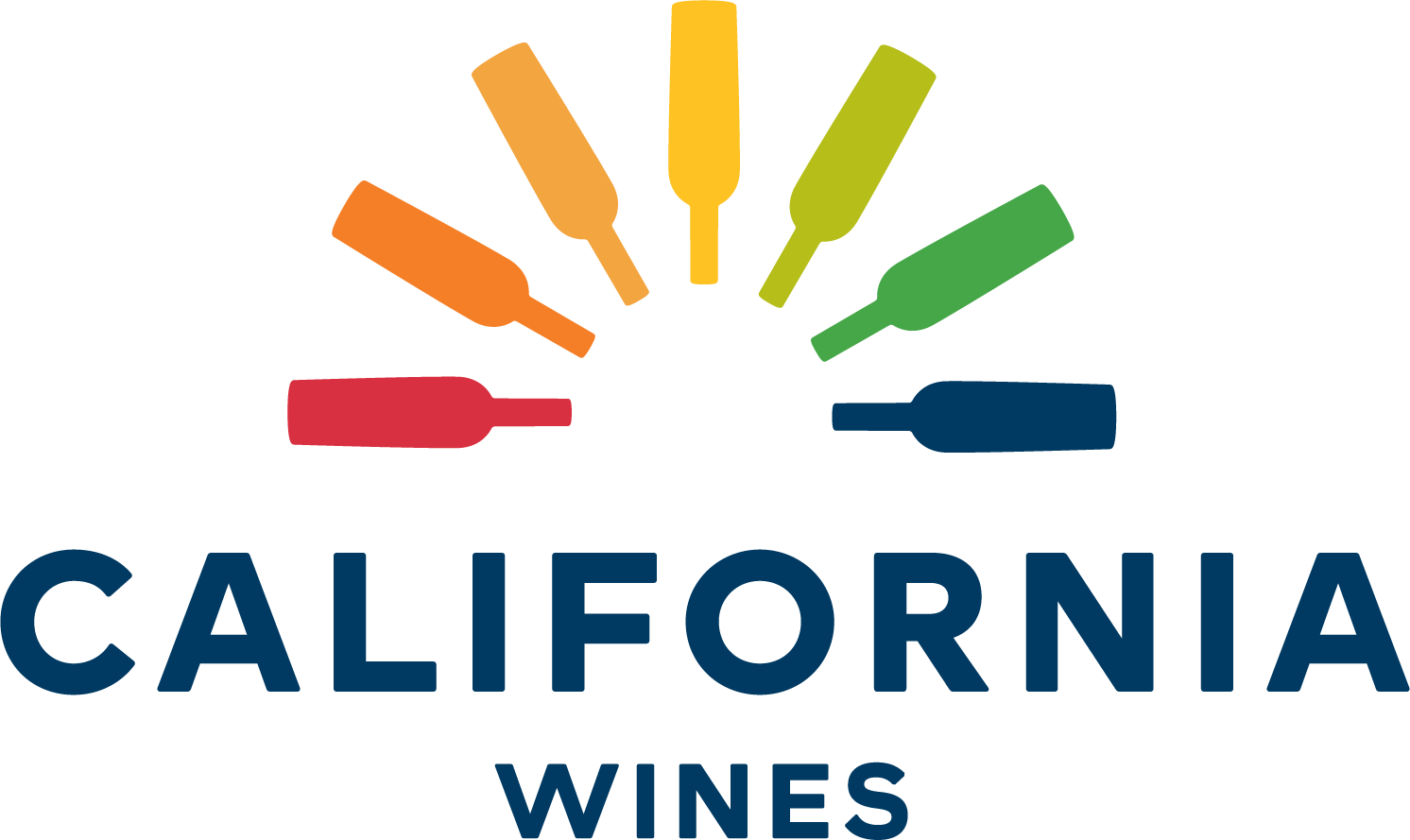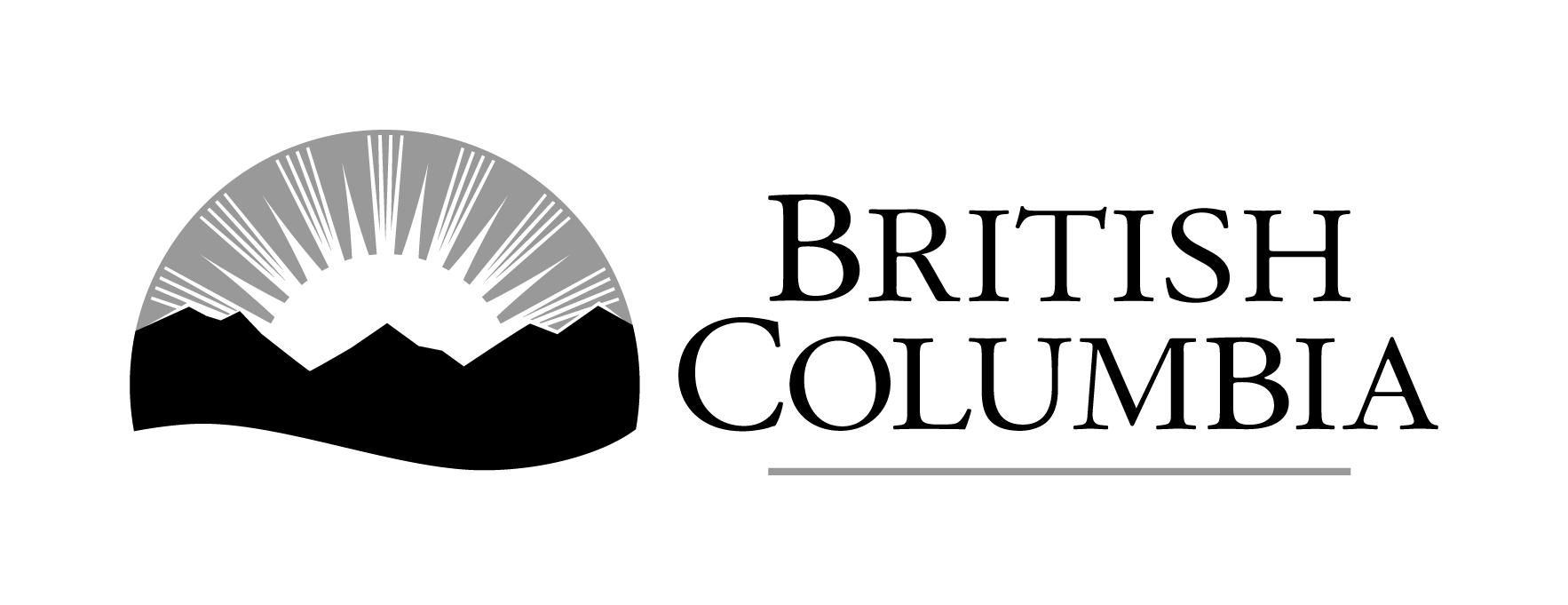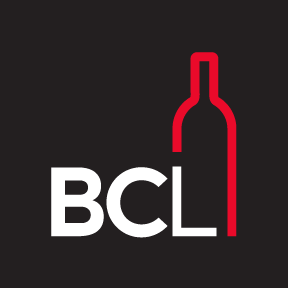Fiesta del Vino
Tuesday, April 25, 7-9 p.m.
The Loft at Earls Yaletown
Recap by Jennifer Matli, Wine Acumen
The 2023 Fiesta del Vino took place in The Loft at Earl’s Yaletown on what was otherwise a quiet Tuesday evening. There was live music, canapés, and even a cocktail titled the “Shapeshifter.” I heard the cocktail was great, though I was laser-focused on tasting the wines on my list and by the time I circled back for a cocktail only the empty table remained. Alas, there was plenty to keep me busy and entertained at the fiesta. Being familiar with the evening’s wines, I decided to map a tasting that mirrored where I lived in the early aughts.
I began 2004 in San Francisco, and ever since have lived near major wine regions. As my path took me from California to Italy and then to Argentina and Chile and back to North America – I decided to follow this trail to taste my way down memory lane.
While there are enough wines made in these regions to warrant days, months, or a lifetime of tastings, as it was only Tuesday, I decided to limit my consumption to one wine per region with the exception of Chile (the reason for this is a whole another story…)
After starting with California’s Gloria Ferrer Sonoma Brut NV, I headed on to Italy’s Masi Caneval Casa Canevel before tiptoeing into unknown territory with a Brazilian sparkler, the Miolo Seival Brut NV. Brazil isn’t yet a part of my story, so it was exciting to create some new memories.
Next stop was Argentina, and I really appreciate their range of Malbecs, from everyday sippers to elegant 100-point splurges, with all sorts of variations in between influenced by vineyard decisions (altitude and latitude, for example) and winemaking preferences (such as use of concrete versus oak.) However, what I haven’t had is a white Malbec so tasted the Bodega Argent Artesano de Argento Organic While Malbec 2021, which highlighted Malbec’s lighter floral notes without the rose petals and dark fruits you’d get from its bigger sister.
Now, on to Chile! I began with a classic coastal Sauv Blanc, the Vina Errazuris Aconcagua Costa Sauvignon Blanc 2022, which paired beautifully with the chicken satays and whitefish tacos. As I couldn’t leave the fiesta without trying a red wine, I headed over to Montes to taste their Alpha Cabernet Sauvignon 2020 and encountered several people enamoured with this offering. I agreed, and on my way out passed one of these enthusiasts, now carrying a glass of Cabernet Sauvignon in each hand, as it was a “fiesta del vino” aka wine party, after all.
Wine Acumen
Certified Sommelier & Business Advisor
Instagram: @wine.acumen
Linkedin: @jenmatli
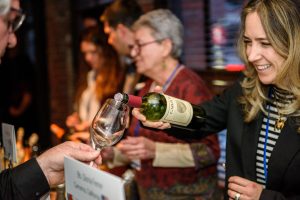
The Shape of Wine
Thursday, April 27, 5:15-6:45 p.m.
Recap by Karl Kliparchuk, MyWinePal
Moderator: Alysha Harker
Panelists: Jim Faulkner, Christa-Lee McWatters, Nicholas Paris MW, and Ray Signorello
I have a few Riedel glasses at home that I use for red Bordeaux blends, Pinot Noir, oaked Chardonnay, and aromatic white wines, but have not tested the theory that the shape of a glass can really positively or negatively affect the taste of the wine, until I attended this seminar at the Vancouver International Wine Festival, hosted by Alysha Harker, Canadian Director for Riedel. She showed us how glass shape changes our wine experience as we sampled Chardonnay, Sauvignon Blanc, Pinot Noir, and Cabernet Sauvignon in Riedel Veloce glassware. This seminar was sponsored by Riedel and the Terminal City Club.
Along with Alysha, we had panelists Jim Faulkner, Christa-Lee McWatters, Nicholas Paris MW, and Ray Signorello whose wines were sampled in these fantastic glasses.
The Featured Wines:
- McWatters Collection Okanagan Valley Chardonnay 2021, BC
- Whitehaven Sauvignon Blanc 2021, New Zealand
- Ex Nihilo Vineyards Okanagan Valley Pinot Noir 2021, BC
- S by Signorello Napa Valley Cabernet Sauvignon 2019, California
Riedel Veloce is their newest line of glassware. Very elegant and beautiful with long, thin stems. The special thing about these new glasses is that they are the thinnest machine-made glasses made by Riedel. Riedel has a long history going back to 1765 in Austria. The family was persecuted by the Germans but were able to reclaim their factory in Küfstein, Austria. The factory was decimated at that time, but luckily the Swarovski family came and helped rebuild the factory. The Riedel family did not originally make wine glasses, but that changed when Claus Josef Riedel visited the Romani Conti winery in Burgundy. Claus Josef was impressed with the wine and brought a bottle back to the factory. He noted that the wine tasted different, depending on the vessel he drank the wine out of. He decided to design a glass that showcases the wine in every way possible to be able to make it exactly how the producer made it. He brought the glass back to the Romani Conti winery as a gift and the winemaker could not believe the transformation of the wine, and that is how the factory shifted to making wine glasses. The Queen of England was their very first customer; she ordered 99 stems.
When you look at a glass, the bowl, the length, and the rim diameter affect the wine in different ways. Alysha noted that these factors will determine where the wine should hit your palate to enhance the wine’s character. She noted the sides of your tongue detect sour and bitter, in the middle is a whole lot of nothing, and right before you swallow again is bitter. She also noted that for all Riedel glasses, the foot will be the same size as the widest part of the bowl to keep the glass from tipping over. The stem is meant to accentuate the bowl, e.g. a longer stem makes the bowl look more elegant.
Before tasting each wine, the winery principal for each winery spoke about the wine and what to expect from the wine. Nicholas Paris MW was the first to speak from New Zealand’s Whitehaven Winery. Nicholas mentioned that this Sauvignon Blanc is a blend from a few areas in Marlborough. He said that this Sauvignon Blanc should show pink and white grapefruit, passion fruit, tropical fruit, and have gorgeous acidity. We tried this wine in the proper glass, the Sauvignon Blanc glass, and then in an incorrect glass, oaked Chardonnay, in this case. We also did this for the other three wines. My tasting notes below are for the correct glass, along with comments about using an incorrect glass.
Wine Tasting Notes
Whitehaven Sauvignon Blanc 2021, New Zealand – Gooseberries and green bean aromas. Medium body and medium plus acidity with flavours of green fruits, gooseberries and green beans. When I tried this wine with the oaked Chardonnay glass the wine had less acidity, was smoother, and had less bright flavours, and dull aromas. The Chardonnay glass has a wider rim opening and bowl, giving the wine a larger surface area.
McWatters Collection Okanagan Valley Chardonnay 2021, BC – This wine is 100% barrel fermented and all go through malolactic fermentation. This wine has vanilla, tropical fruit and butterscotch aromas. Medium body, soft and round with butterscotch, tropical fruit and light oak flavours. Medium acidity. Trying this wine in the Sauvignon Blanc glass with the smaller bowl and rim, the wine had little aroma and tastes overwhelmingly oaky and your tongue became very dry.
Ex Nihilo Vineyards Okanagan Valley Pinot Noir 2021, BC – This winery is in Lake Country, north Okanagan and it actually does get warm in the summer. The bud break is about three weeks later, but with the longer growing season, the grapes still ripen at the end. Further south, with the hotter climate the vines can shut down sugar production, while in Lake Country the temperature is not too hot to cause long periods of vine shutdown. This wine has beautiful floral, red fruit, red cherries, and dill nose. Medium-body, roundish with a light mouthfeel. Red fruit, strawberry and raspberry flavours. The alternate glass we tried with this wine was the Cabernet Sauvignon glass which was taller and the bowl was not as wide. In this glass the aromas were a bit dull and closed. The flavours were not quite ripe, greener. The wider bowl of the Pinot Noir glass slowed down the wine as it enters your mouth and the wine touches the middle part of your tongue, but the Cabernet Sauvignon glass has no obstruction to slow it down and the wine goes to the back of your mouth where the bitter-sensing taste buds are located.
S by Signorello Napa Valley Cabernet Sauvignon 2019, California – 2019 was the first vintage of this wine. It was a new project for the Signorello family who lost their winery to the wildfires in Napa Valley. The grapes come from three vineyards from three different areas. Mostly Cabernet, but has some Merlot and Petit Verdot added. The wine has a rich ripe black fruit nose, along with blackberries. It has a medium-minus body and light mouthfeel. Soft tannins and acidity. Ripe berries and blackberries on the palate with some pepperiness on the finish. Medium length. The wine was then poured into the Sauvignon Blanc glass. The aromas were more citrus. Don’t drink a full-bodied red wine with an aromatic white wine glass.
Alysha at the end gave us some options for drinking Champagne with these glasses. She said that Champagne Blanc de Blanc should be sipped from the oaked Chardonnay glass and the Blanc de Noir should be sipped from the Pinot Noir glass.
MyWinePal
Facebook: @karl.kliparchuk
Instagram: @mywinepal
Linkedin: karl-kliparchuk-mywinepal
Twitter: @mywinepal
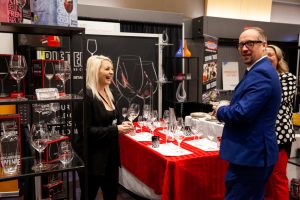
California Wines: Eureka in the Glass!
Friday, April 28, 5:15-6:45 p.m.
Recap by Bill Tieleman, Wine Barbarian
Moderator: DJ Kearney
Panelists: Mark de Vere MW, JJ Dowell, Gabriela Marble, Dave Phillips, Ray Signorello, Joe Spellman MS
If California’s fine wines were a musical group, the name would have to be Earth, Wind and Fire!
A prestigious panel of winery principals talked terroir, hills and valley, biodynamic methods, fog, cooling winds, solar power and the climate change that’s sadly lighting parts of the state on fire in a fascinating Vancouver International Wine Festival 2023 seminar titled California Wines: Eureka in the Glass! on April 28, moderated by DJ Kearney.
The wines ably represented the diversity of California, with Napa, Sonoma, Mendocino County, Lodi, Santa Barbara and Paso Robles providing bottles that also ranged from sparkling to Chardonnay, Pinot Noir and Cabernet Sauvignon and blends – all delicious to the large crowd attending.
“Biodynamic goes beyond organic… and includes astrological elements,” said Gabriella Marble of Bonterra, pouring The Roost single vineyard Chardonnay. “But I get corrected when I call it a ‘witchy method’!” she added to laughs.
The California spirit of wine camaraderie was evident, with Chad Harvey of Mondavi Winery saying: “Robert Mondavi’s philosophy was that if one of us wins, we all win.”
But if united in growing grapes, the wineries face vastly different and diverse conditions across the state, with Shaune Zeleny of J. Lohr in Paso Robles noting that they see a 30-degree Celsius difference in temperatures from day to night, adding that “the warmth gives you rich, dark black fruit” in their Cabernet Sauvignon.
It’s not just temperatures that fluctuate. Michael Smith of Peju in Napa Valley said: “We have soil that drastically changes” in their vineyards.
And there are worse challenges. Ray Signorello pointed out that his Napa winery was destroyed by fire in 2017 and then it lost a crop due to smoke taint in 2020.
But judging from Signorello’s excellent 2019 “S” cabernet sauvignon and all the other wines poured, “Eureka” is still happening with California wines when they hit your glass!
Bill Tieleman is a wine blogger and communications consultant.
Facebook: @bill.tieleman
Instagram: @WineBarbarian.ca
Twitter: @BillTieleman
Website: www.WineBarbarian.ca
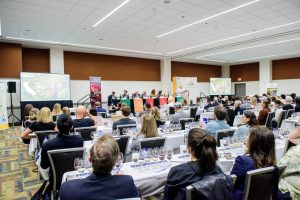
The Global Cru
Friday, April 28, 5:15-6:45 p.m.
Recap by Barb Wild, Good Wine Gal
Moderators: Filippo Bartolotta and James Nevison
Panelists: Laura Catena, Frédéric Chaudière, Ivo Cibilic, Daniele Dellanoce, Chad Harding, Carol Anai Koch Gonzalez, Giovanni Mazzei, Cinthia Morabito, Jose Luis Muguiro, Jr., Sergio Zingarelli
The Vancouver International Wine Festival 2023 kicked off the week with a renewed sense of vibrant celebration. The celebration of food, wine and theatre kicked the doors of international wide-open counting down in Portuguese as South America is the focus. Don’t forget, Brazil makes wine too!
The traditional Grand Tastings and seminars are back and totally switched on to what’s new and what’s happening in the wine world. Seminars are a great way to continue your wine education where the best wines of the event are showcased. Attending seminars is always a highlight and if you have not yet attended, you are missing out.
The first seminar I attended this year was The Global Cru. By design, the discussion focused on meaning. Is a cru something more delicious? Is it more expensive? While cru is a French word with no real translation, it refers to a site or single vineyard that is unique in some way making extraordinary wine versus the plot of land just around the corner. A good example is Chambertin – Clos de Bèze. This 15-hectare vineyard was planted by nuns in the 6th century and 15 centuries later the vineyard is designated grand cru where terroir is considered better here than on the six other grand cru sites that hyphenate with Chambertin. Cru one could argue refers to a unique history, the best terroir for the grapes and passionate vignerons producing a style that cannot be replicated anywhere else in the world. In this delicious session we explored top grape varieties and producers from around the world with each presenting personality providing his or her definition of the word “cru”.
The Global Cru was moderated by the energetic Italian wine guy Filippo Barolotta and local wine guy James Nevison (Province, @hadaglass) along with a panel of international wine celebrities demonstrating the specific character and style unique to their property and brands. Many spoke to best efforts, tiny plots, careful selection and focused attention to shepherding the wine from fermentation to bottle. And while the discussion explored cru’s meaning, it was concluded that the only way to provide answers was to taste wine. And lucky for the attendees, the wines were exceptional.
The panel discussion started with Dr Laura Catena of Catena Zapata Wines. She reminded us that there is no better word to describe a sense of place than “cru” and culture plays into “cru”. Presenting Adrianna Vineyard “White Stones” 2020, this was the only white wine in the room. Its story: Chardonnay planted in 1992 at high elevation which brings ripe fruit and freshness to the wine. White stones made of calcium carbonate cover the 2-acre parcel and the result is a thrilling style of 100% Chardonnay in a Chablis-esk mineral driven wine.
Tasting Note: Lean, mineral and focused chardonnay with no apparent oak. It has good structure, age-ability and profound length.
Carol Anai Koch Gonzalez from Cono Sur Vineyards and Winery presented 2019 from Casablanca Valley in Chile. 2003 was the first vintage of what is now a cru wine. While historically only 20 years old, this wine is more about time and place. Casablanca and San Antonio are in close proximity to the Pacific Ocean. The cool oceanic influence brings more red fruit to the wine. Grapes are planted on red clay and granite soils which give mineral character to this Pinot Noir expressing elegance as well as concentrated aromas and flavours that are distinctive to this vineyard.
Tasting Note: Salty and vibrant with great acidity and alluring texture. It’s juicy with lots of concentrated flavour and a good finish. Look out Burgundy.
With vineyards overlooking the Adriatic Sea the romance of Croatia can’t be missed. Petar Delic from Vinarija Korta Katarina presented Ruben’s Private Reserve 2011 made from old vines Plavic Mali grown to the south on the Dalmatian coast. Vines grow on limestone and brown soil which absorb water needed during the very hot summers. Grapes ripen with help from 2000 sunlight hours, lots of heat and UV light reflected from the sea. There are only 3000 bottles made of this special cru wine defined by its unique and specific terroir.
Tasting note: The aromas and flavour profile are tertiary. The garnet colour in the glass is the first clue that this wine has developed in the bottle. Aromas of bruised black berry fruit, balsamic crema, dark chocolate and sea salt. In its youth this would be very tannic but with age it’s showing smooth integrated tannins, concentration of flavour, with full body structure.
You may not recognize Jose Luis Muguiro Jr, our fourth panelist, but it’s likely you will recognize the name Marques de Riscal Winery and Hotel along with the 2018 Rioja Reserva. Architect Frank Ghery provides the Canadian connection having designed this iconic, whimsical, colourful wave-like structure. Complete with a Michelin star restaurant, the reputation of high quality goes beyond age worthy wines made from indigenous Tempranillo and Graciano. Jose says cru is a “sense of place”. His family has been making wine here since 1858 in the Basque region of the Rioja DOCG. Located between the Sierra des Cantabria mountains and the Rio Mayor, this exceptional site is a microclimate that features a lot of heat and wind. This wine is made from 100-year-old vines giving flavour to history, terroir and the meaning of “cru”.
If history is essential to cru, then look no further than Marchesi Mazzei and Giovanni Mazzei, a family member who presented Castello di Fonterutoli Chianti Classico Gran Selezione DOCG 2018. This is considered a cru as grapes in this wine come only from this ancient estate vineyard. The family’s origins can be traced back to the 11th century when they were coopers (barrel makers). Fonterutoli and Chianti Classico were first documented in 1398 as a recorded business transaction. In 1435, the family started wine making and has continued for 26 generations. The best vineyards and best selections of Sangiovese are at the heart of Mazzei having propagated over 40 varieties of Sangiovese.
Tasting Note: Pretty aromas and concentrated flavours of bright red fruit, oak spice, soy, black tea rich and soft. Very approachable with great drinkability. This is a very special wine.
In stark contrast to the Mazzei family, youthful Tuscan producer Rocca delle Macie, proprietor Sergio Zingarelli presented Sergio Zingarelli Chianti Classico Gran Selezione DOCG 2016. Established in 1973 by Zingarelli’s father, a famous Italian stunt man, this wine is a tribute to Italo Zingarhelli who bought the winery 50 years ago. The term cru applies to careful selection of Sangiovese fruit from estate vineyards with a first vintage in 2010, the same year as the Gran sélezione regulations in Chianti Classico came into effect. These Sangiovese vineyards are terraced to create better exposure for the grapes better ripening at 380 meters of elevation on soils that give minerality considered unique to Tuscany.
Tasting note: This 100% Sangiovese style is medium bodied with a good balance of acidity, fruit and alcohol. There is a lovely texture and long finish on an oak spice note.
Heading north, the next wine was Piemontese, presented by Daniele Dallanoce, International export director – Giovanni Rosso Barolo Serralunga DOCG 2017. Here is an example of cru that is about the people. Barolo is home to 350 families with different villages and 11 crus in a small area of just 20 ha total. Here Nebbiolo must be a perfect copy of terroir and Daniele thinks cru is about the vineyard and the people who manage it.
Tasting note: Aromas are floral, slate with hints of liquorice with similar flavours. The body is medium but the power is full on. Its texture is silky and drying. It has great balance and concentration leading to a long finish.
On to France with Frederic Chaudiere, Proprietor/Winemaker at Château Pesquie in Ventoux and a celebrated brand in the BC market. Chaudiere believes soil is the key to cru. Silica AOC Ventoux 2020 is the new world in the old world. For reference, Ventoux is located south of the Rhone Valley under the Ventoux mountain where Syrah vines grow on silica and limestone, and Grenache vines on sand at higher elevations. Climate change is making survival key, so finding new terroir is the focus here.
Tasting note: Round and rich with tension and texture. Fruit concentration and deep colour are highlights followed by flavour intensity and finish making this a beautiful wine.
Named after the Founder Don Maximiano, Errazuriz is a great example of world class wine. Cinthia Morabito, Marketing Manager shared 2017 Founder’s Cabernet Sauvignon pointing to history and people’s influence in creating a “cru” vineyard. Established in 1870 Errazuriz has built one of the oldest estates in Chile. The first vintage was 1983. Originally this wine was more French than Chilean which was the style of the 90s with a fuller body, grippy and higher alcohol. Now the focus is on more fresh fruit and silky tannins. True to form, the style is made from a blend of 67% Cabernet Sauvignon, 12% Malbec, 8% Carmenere, 7% Petit Verdot and 6% Cabernet Franc.
Chad Harding presented the California cru To Kalon Cabernet Sauvignon Reserve 2019. Robert Mondavi’s wine life started here in Oakville, California with vineyards right behind the arch on the now iconic Napa winery. The vision was to create world class wine from this single vineyard where vines grow on ancient alluvial fans. What’s unique about the vineyard? It’s the soils. Free draining gravel soil lays at the back of the vineyard and sand is at the front. This combination with Cabernet Sauvignon vines produces an elegant wine, rich and ripe, with fantastic intensity, fine tannin texture and a long finish. Classic from 97.5% Cabernet Sauvignon and 2.5% Petit Verdot.
Tasting note: Lots of smokey black cassis and black berry fruit with black tea and clove spice, some olive tapenade and dried herbs. Complex and intense this wine has fantastic texture and flavours that carry to the end.
Catena Zapata of Tupungato Argentina presented the final wine. Dr Laura Catena, Managing Director, shared the story of Adrianna Vineyard “River” Malbec 2019. Here Malbec is grown on pre-phylloxera vines from massal selection on a 2.5-hectare block. “Stony soil Malbecs tend to be extremely aromatic, rich and luxurious”. No where else in the world does this representation of Malbec exist. The vineyard is planted at a high-altitude of 1,500 meters on soils that are stoney and sandy. Robert Parker gave it 100 points. Need I say more.
Tasting note: Medium bodied, fresh and vibrant with great tension and balance. The wine is silky with fine grain tannins drying gently to the elegant finish.
In the end, the definition of cru can be found high in the Andes, along the coast of Chile, in the heart of Napa and around the world, on sites that have unique terroir and passionate people willing to do the work. The work to grow vines and make wine for some vignerons, is a way to pay homage to the family legacy. For others the passion is just about just making “good wine”. For the wine lover, it’s part of the journey of learning, tasting and sharing the love of wine.
Good Wine Gal
Facebook: @goodwinegal
Instagram: @goodwinegal
Linkedin: @barbwild
Twitter: @goodwinegal
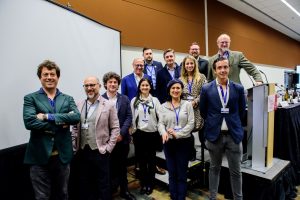
La Crema de la Crema
Saturday, April 29, 5:15-6:45 p.m.
Recap by Barb Wild, Good Wine Gal
Moderators: Anthony Gismondi, Evan Goldstein MS
Panelists: David Bonomi, Rafael Boscaini, Marina Castillo, Óscar Salas, Cinthia Morabito, Ben Pon, Pablo Prieto, Véronica Sardin, Carlos Serrano, Mele Sosa
The best of the best showcased South America wine like never before. The event kicked off Saturday April 29th at 5:15 pm. Hometown host Anthony Gismondi and South American wine expert Evan Goldstein MS (@evangoldsteinems) lead the discussion traveling from Chile, Argentina to Uruguay and Brazil.
The panel was complete with winemakers, brand ambassadors and business leaders who provided insights and experiences from a fine wine perspective that counters the experience of $10 wine – something that became synonymous with this region over the past decade. In fact, there is a definite wow factor here and tasting along with panel and moderators proved it.
The conversation got off on the dulce de leche foot and despite the popularity of football and empanadas, passions flared. It seems that Uruguay’s dulce de leche is the best.
Wines Tasted & Stories Told
From Brazil the Miolo Wine Group presents Merlot, Cabernet Sauvignon – Lote 43 2020. As leaders in fine wine Vinhos do Miolo from Vale do Vinhedos in the state of Rio Grande do Sul, is Brazil’s most famous wine region. Guiseppe Miolo arrived in Brazil and has been making wine since 1897. Located in the south, this region harvests grapes once a year in what is a relatively humid and warm climate. Considered Brazil’s terroir wine the Lote 43 relates to a plot of soil that is produced only in the best vintages by winemaker Adriano Miolo. This is a blend of Cabernet and Merlot aged separately and then blended. Best vintages: 2018, 2020 and maybe 2023.
Tasting Note: Full bodied, deep ruby, aromatic with notes of sweet plum jam, baking spice, truffles, cacao and clove. Complex red wine. The balance is perfect, soft and silky with a very long finish.
From Chile, Vina Carmen from the Maipo Valley presented Delanz Alto Jahuel Estate Blend 2020 from Pablo Prieto, Winemaker. Viña Carmen is a leader in the Maipo Valley where Cabernet Sauvignon is king. Established in 1850 and named after the founder’s wife, Vina Carmen is one of the oldest wineries in Maipo Valley. The Delanz label highlights the unique terroir of the Alto Jahuel vineyard that sits in a shallow valley between the coastal mountains and the Andres at 500 to 750 meters. The Estate Blend 2020 is made from 74% Cabernet Sauvignon, 15% Cabernet Franc, 8% Petit Verdot, 3% Petite Sirah all grown here. This is the 3rd vintage.
Tasting Note: Full bodied with complex aromas and flavours of red fruits, perfumed floral notes, cocoa, flint, mineral leather tobacco. The wine has freshness, nice texture, great balance and a long finish. Juicy and drinkable.
From Argentina, Trapiche Winery presents Malbec – Finca Ambrosia 2019. Trapiche was founded in the 1880s with first vintage 1883. It has been a leading producer in Mendoza with plantings exceeding 3000 acres. The key feature is altitude. There are three styles of Malbec in the Ambrosia series from vineyards at Tupungato that sit at 4,000 ft elevation. While Uco Valley has higher elevation, overall, the exposure and cool night temperatures produce grapes that can ripen to the full extent while retaining great acidity expressing the mineral character of the soils and typicity of the terroir. Daniel pi is the winemaker.
Tasting Note: Dry, full bodied and deep ruby this wine offers bright and fresh aromas of red and black cherry followed up with green peppercorn, mineral salt and oak spice.
Santa Rita Winery was founded by Don Domingo Fernández Concha in the 1880s who brought the French grape varieties to the Maipo Valley along with winemakers and equipment. Pewën de Apalta Carmenere 2019 was made from small blocks of Carmenere on vines dating back to 1938 by winemaker Óscar Salas who has no fear of the classic herbal note that characterizes the expression of Carmenere. This vineyard is dry farmed on poor granitic soils that offer good drainage. The wines have very concentrated fruit profiles. Oak barrels are 60% new.
Tasting Note: Aromas and flavours of green pepper, fresh flowers, crunchy bright red fruit balance on the palate with fresh, juicy and tart with texture to the finish.
Montes Alpha ultra-premium wines from Apalta, Chile represent some of the most celebrated styles of Carmenere in the world. A recent arrival on the scene is Wings Carmenere 2019 a project designed to showcase a sense of place by founder Aurelio Montes and his namesake son. Carmenere is a late ripening grape variety that loves the terroir especially of this vineyard. 95% of the wine exported.
Tasting Note: Dry, full bodied, deep ruby in the glass, with rich, black fruit aromas and flavours with a distinct jalapeño character followed by oak, cedar and vanilla spice. There is perfect balance and a long silky finish that carries the spice finish to the end.
Bodega Norton was founded in 1895 in Luyan de Cuyo by Edmond Norton in 1895. Today it is led by Michael Halstick, part of the Swarovski family. At 26 years of age, he moved to Argentina and started running the winery after his father Gernot Langes suddenly died. In 2003, he honoured his father with a blend of the best grapes from the estate vineyards. The Gernot Langes 2019 is a blend of Malbec and Cabernet Franc from five vineyards located in Lujan de Cuyo & Uco valley with an average age of 30 years. The vines are older in Mendoza than Uco Valley but was the first DOC for wine in Argentina. This is the poster child for wine from the region.
Tasting Note: Dry, deep ruby, with aromas and flavours of more red than black fruit, toasted bark, oak spice and mineral salts. It is fresh and juicy with great structure and at 14.9% abv you can’t tell. Great balance and finesse.
Bodegas Salentein also located in Uco Valley, Argentina started making wine in 1993 long before there were other commercial operations. In fact, Uco Valley was a desert when Ben Pon, engineer and co-owner, took up a fancy to establish a winery. Winemaker Jose Gallante joined the team and the rest is history as they say. The vineyards sit at 1100 m to 1700 m with the winery in the centre. Grapes are hand-picked, carefully sorted, and made into first class wine. Today the winery employs state of the art production. Gran VU Blend 2015 highlights the ripeness grapes achieve here along with soils of alluvial and sandy soils, tons of sunlight, and run off from the Andes glaciers. This vintage blend is 62% Malbec and 38% Cabernet Sauvignon.
Tasting note: Wow ripe fresh black fruit over liquorice spice and herbs on soft tannins to a long silky finish. Elegant and delicious.
Named after the Founder Don Maximiano, Errazuriz is a great example of world class wine. Cinthia Morabito, Marketing Manager shared 2017 Founder’s Cabernet Sauvignon pointing to history as the oldest winery in Chile. Originally this wine was more French than Chilean which was the style of the 90s with a fuller body, grippy and higher alcohol. Now the focus is on more fresh fruit and silky tannins. True to form, the style is made from a blend of 67% Cabernet Sauvignon, 12% Malbec, 8% Carmenere, 7% Petit Verdot and 6% Cabernet Franc.
Bodega Garzon is home to a town called Garzon in Uruguay, a small country north of Argentina and possibly South America’s best kept secret. The wine Balasto 2018 is named after the soils composed of granite, granite, and more granite. Along with oceanic influence, rolling landscape and variable terroir, this best of the vintage style offers tension and voltage with structure and flavour power. Made from 40% Tannat, 34% Cabernet Franc, 18% Petit Verdot, 5% Merlot, 3% Marselan this unique blend was dry, full bodied, spicy red and black fruits with good structure, textured tannins and great finish.
Catena Zapata from Uco Valley Argentina was presented by Marina Castillo who showcased the wine that is an homage to Laura Catena’s father, Nicolas Catena Zapata 2019. It featured the best fruit of 2019 and when tasted blind against Lafite and Petrus, it stood out not only for tremendous profile, and age-worthiness but also for price. With 120 years of focus on Malbec in the end the love of Cabernet Sauvignon won’t fade. This blend is 42% Cabernet Sauvignon from Gualtallary (Adrianna vineyard) and 30% Malbec from Altamira (Nicasia vineyard) and Cabernet Franc (28%). It reflects a Bordeaux blend with more toasty, spicy notes along with classic black currant, precise structure and balance with drying fine grain tannins and a very long finish. An exceptional example of the wines offered at these seminars.
Tasting wines like Nicolas Catena Zapata 2019 (new release) was unexpected. This is not a typical wine or a typical tasting experience. South America presented La crema de la Crema and this tasting experience will go down in history as one to beat.
If you want to create memories and celebrate your passion for wine, attend seminars. As described, they can be unforgettable. Hell ya! So next year, when the Vancouver International Wine Festival is taking place (it will be February 2024), don’t be shy. Find a seminar that interests you and buy a ticket. You won’t regret it.
Good Wine Gal
Facebook: @goodwinegal
Instagram: @goodwinegal
Linkedin: @barbwild
Twitter: @goodwinegal
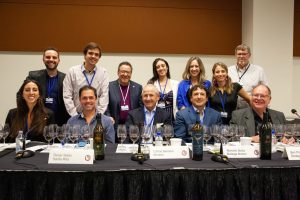
Put Some Sparkle in Your Life
Sparkling Wine Regional Tasting Station
Recap by Christine Campbell, Girls Go Grape
At this year’s Vancouver International Wine Festival, one of the regional tasting stations buzzed with energy. Sparkling wine fans headed straight for the “Put Some Sparkle In Your Life” table. Attendees enjoyed twenty, yes twenty, different sparkling wines from around the world. Selections included wines from France, Germany, Italy, Spain, New Zealand, Chile, British Columbia, and California.
Sparkling wine is a type of wine which has significant amounts of carbon dioxide dissolved in it, making it fizzy. This type of wine is famous for its effervescence, making it a popular choice for celebrations and special occasions. Sparkling wines are produced worldwide, with notable examples of Champagne in France, Prosecco in Italy, and Cava in Spain. The sparkling category is growing in British Columbia with excellent results. The production methods and grape varieties used in each wine region result in unique flavours and characteristics, making each sparkling wine distinct and delicious.
Sparkling wine is made with a few different methods. The first and most coveted is the traditional method. This wine method is a precise and complex process that involves several steps to achieve the perfect effervescence and flavour. First, the grapes are harvested and pressed to extract the juice. Then, the juice is fermented in large vats to create a still wine. After this, a mixture of yeast and sugar is added to the still wine, and the wine is bottled and capped with a crown cap closure. The yeast consumes the added sugar and produces carbon dioxide, now trapped in the bottle, creating bubbles. The bottles age on their lees, or dead yeast cells, for several months to years, developing unique flavours and complexity. Finally, the bottles are riddled, or turned and tilted, to collect the lees in the neck of the bottle, then disgorged, or opened, to remove the lees and add a dosage. Dosage is a mixture of wine and sugar to balance the acidity and sweetness of the wine. The result is a delicious and luxurious sparkling wine perfect for any occasion. Traditional method sparkling wines include Champagne, Cava, Crémant, and Franciacorta.
The Charmat method, also known as the tank method, makes sparkling wine widely used in Italy. In this method, the second fermentation that produces the bubbles occurs in large tanks rather than individual bottles. The tanks allow for greater efficiency and consistency in the production process. The Charmat method is how Prosecco is made in Italy. The resulting wine is known for its fresh, fruity flavours and light and refreshing character.
The Traditional and Charmat methods are the most popular choices in sparkling winemaking; however, winemakers have other options. These include Ancestral, Transfer, Continuous, and Carbonation.
The sparkling wine-tasting station included:
- Piper-Heidsieck Brut Champagne
- Nicolas Feuillatte Reserve Brut Champagne
- Henkell Crémant de Loire
- Louis Vallon Crémant de Bordeaux
- Gloria Ferrer Sonoma Brut
- Segura Viudas Reserva Brut Cava
- Freixenet Elyssia Cava
- Unsworth Vineyards ‘Charme de L’Île’ Rosé
- Borgota Ritmo Rosé Brut
- Cono Sur Rosé Brut
- Oyster Bay Sparkling Cuvée Rosé
- Casa Paladin Prosecco Millesimato Rosé Brut
- Mionetto Prosecco Rosé
- Villa Marcello Prosecco
- Tintoretto Extra Dry Prosecco
- Casa Canevel Brut Prosecco
- Canella ‘Lido’ Brut Prosecco
- Blu Giovello Prosecco
- Freixenet Prosecco
- Henkell Blanc de Blancs
The sheer success of this years ‘Put Some Sparkle in Your Life’ regional station proves the sparkling wine category is thriving and celebrated by the Vancouver International Wine Festival attendees.
Girls Go Grape
Facebook: @girlsgogrape
Instagram: @girlsgograpedotcom
Twitter: @girlsgogrape
